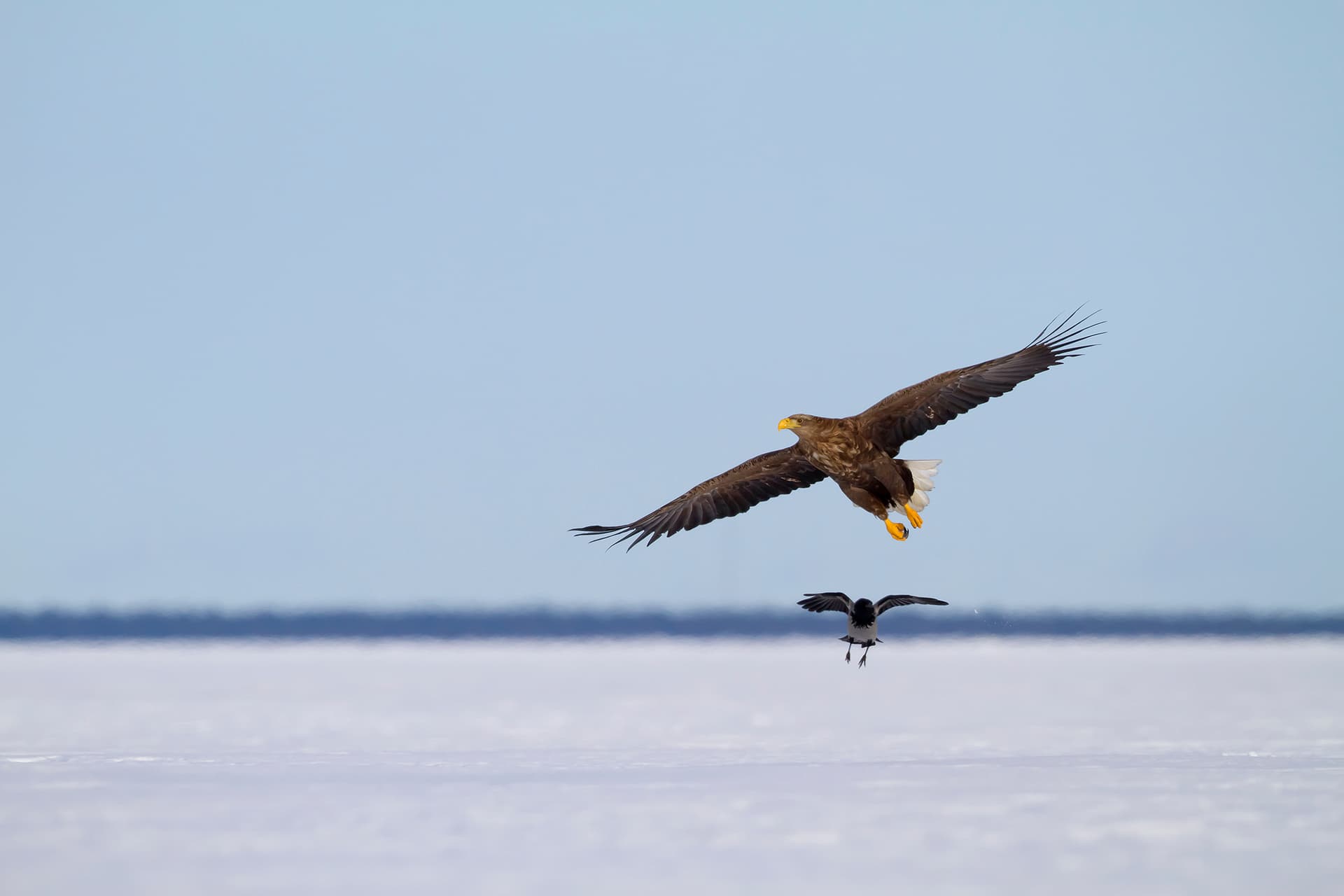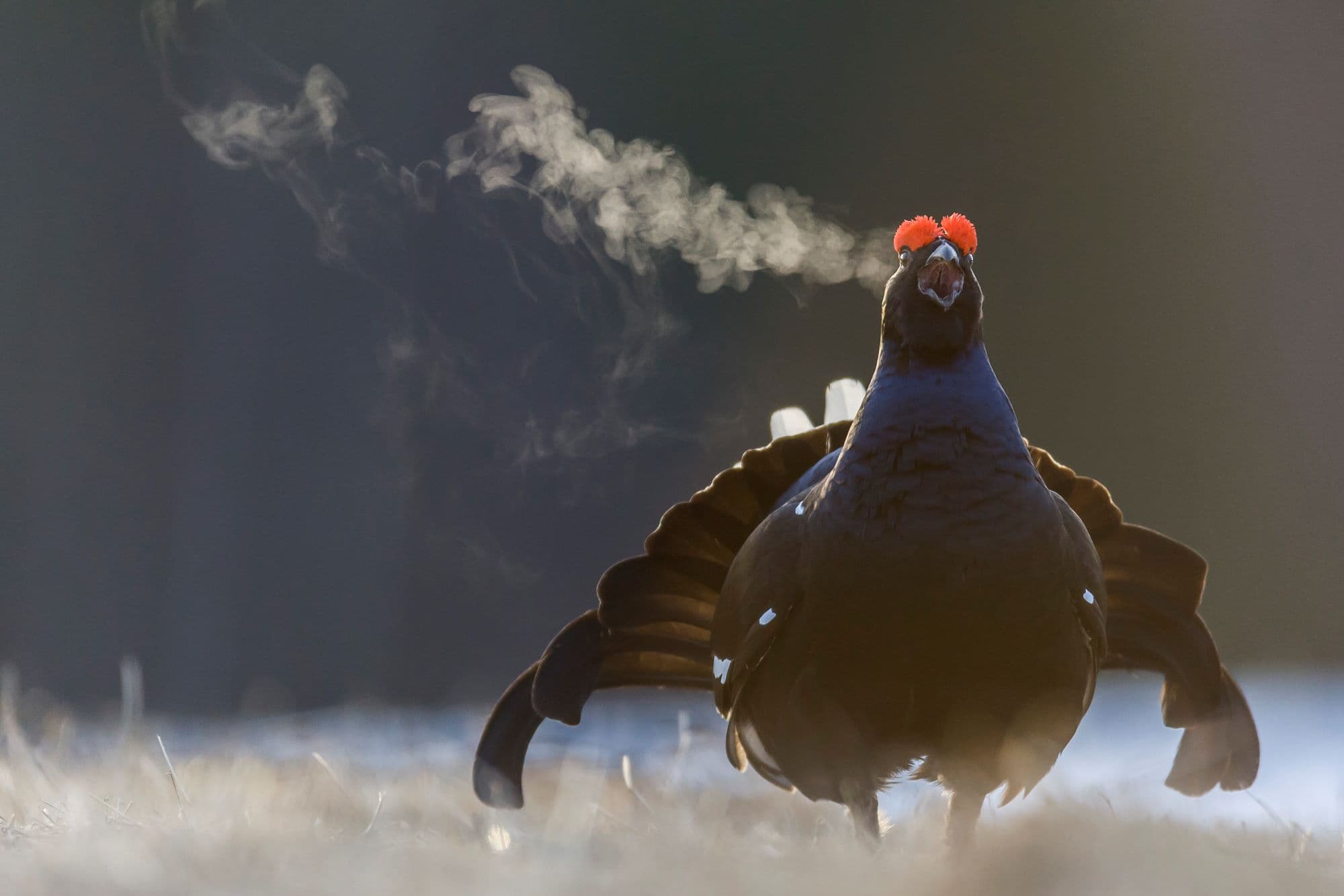
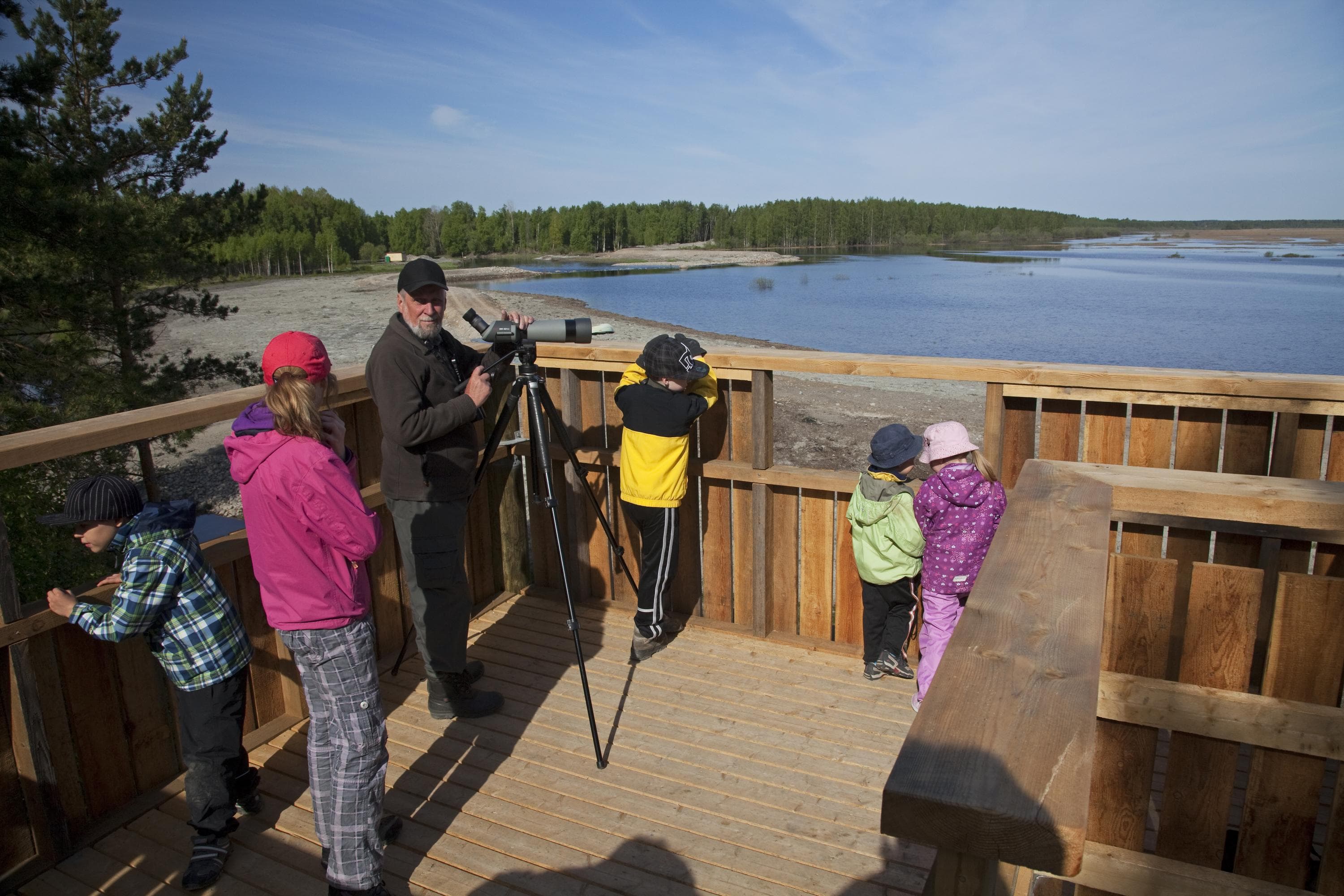
Bird watching
Finland is a popular destination for bird enthusiasts. Centuries-old forests, that can be found in several National Parks, are home to many birds of the woods. Owls, woodpeckers, eagles, cranes and woodland grouse species are of special interest for ornithologists from all over the world.
Things that might interest you
See all articlesSome enthusiasts come to Finland to see Charadriiformes, which live near water, and can be spotted in the coastal areas and archipelago of the Baltic Sea. It can be fascinating to see common waterfowls in their summer plumage. Bird-watching towers are often found near popular birding locations and in the protected areas that are important for the nesting and migrating birds.
The period from February to April is a fascinating time for bird enthusiasts because of the spring migration. At the end of May, hundreds of thousands arctic water birds and waders pass through Gulf of Finland National Park on their way to their nesting places in the north, creating an amazing natural spectacle. Autumn migration starts as early as June. For bird watchers, every month is truly different.
It is always a good idea to hire a local guide or expert for your bird watching trip to get more out of it. Check the links on the web pages for specific destinations in the Luontoon.fi website, or search local tourism websites.
While National parks offer a unique experience for watching birds and other wildlife, you should keep your distance to both animals and their nests. Never disturb a bird or other animal. Do not approach their homes, as birds can abandon nests if disturbed or harassed. Simply put, leave birds and other animals alone—no touching, no feeding, no harassing. Many National Parks and other protected areas have restricted areas during the nesting season from April though July. Check locally!
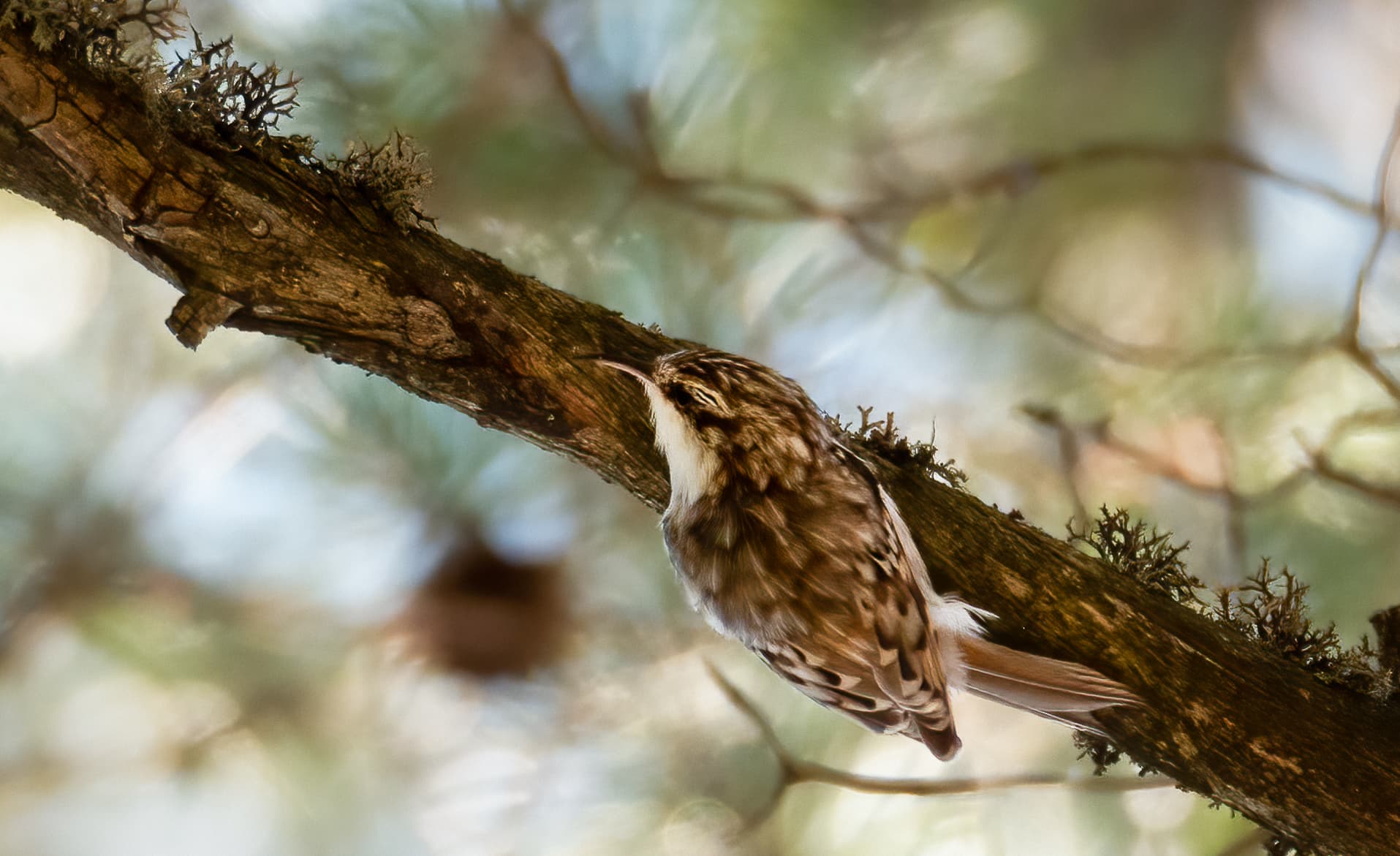
Good to know & Safety
Familiarize yourself with Everyman’s Right, i.e. the responsibilities and rights you have when moving about in Finnish nature. They apply to both Finnish and foreign citizens.
A hiker on a trail in the forest looks through binoculars.
Special equipment is not necessarily needed when bird or wildlife watching. However, binocular or a field guide to birds and animals can be useful. In a hot and sunny weather, carry plenty of water, stay hydrated, and cover your head. Dress according to weather.
Never approach wildlife. Remember that National parks and other protected areas exist mainly for nature conservation reasons, offering birds and wildlife a safe place to live. Keeping your distance to wildlife is also a matter of safety.
Protect yourself from mosquito bites. Mosquitoes do not spread diseases in Finland, so you do not need a vaccine against them. However, mosquito bites can irritate your skin when your body is not used to them. One of the best ways to keep mosquitoes from biting you is to simply cover your skin. Wear loose, long-sleeved shirts and long pants when outdoors. Carrying mosquito repellent is a good idea, too.
Tick bites can be dangerous. Ticks are found especially in the Åland Islands, the Coast and Archipelago, Southern and Central Finland. Ticks live in tall grass and shrubbery, so wearing long sleeves and hiking in the centre of the trail are strongly recommended to reduce contact with ticks. Carry a tick remover and check yourself daily when hiking in a tick-infested area. Stay on trail to avoid tick bites.
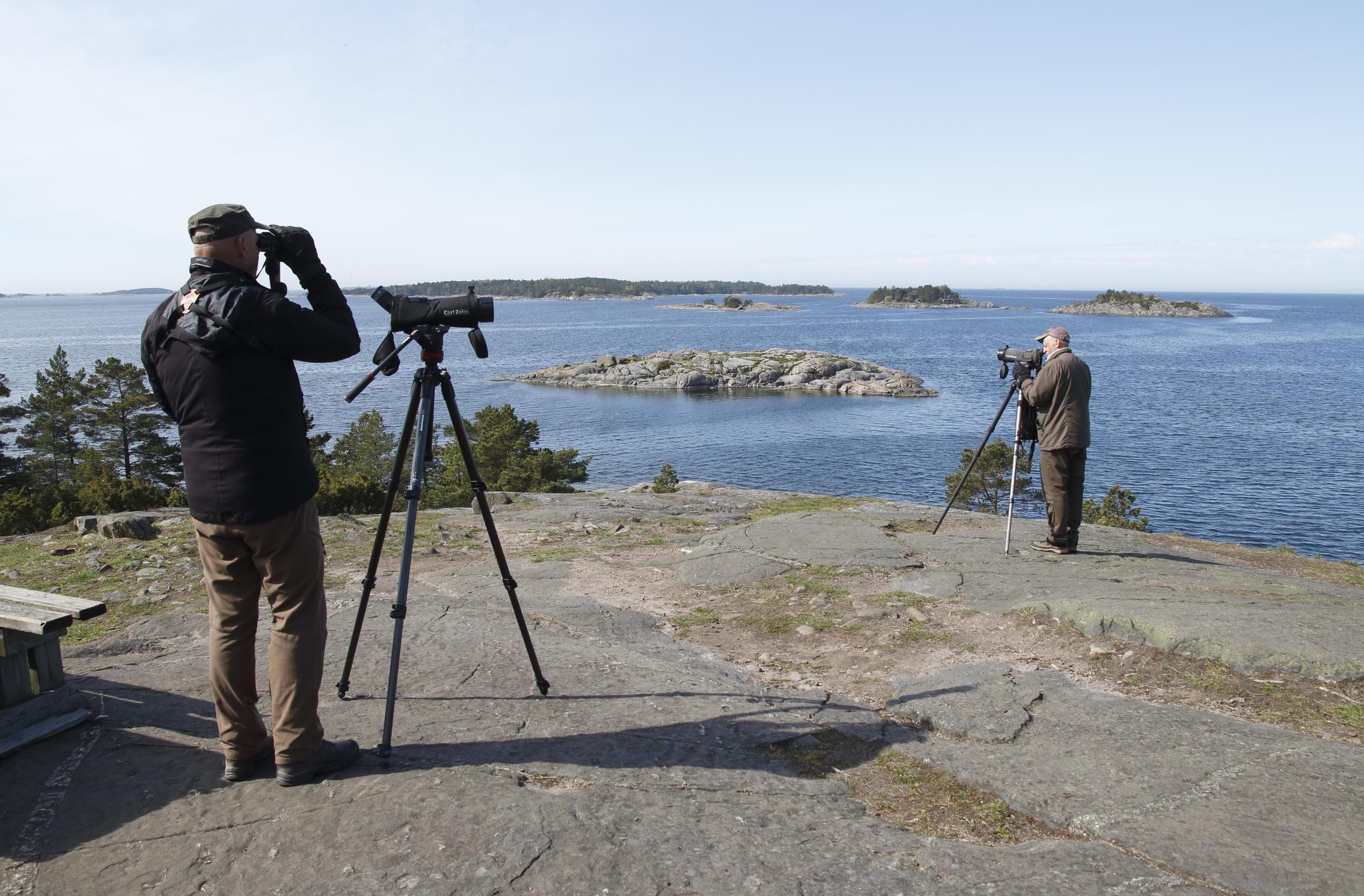
Getting Started
Finland is full of wildlife. A relatively large country in size, it stretches from the 60th parallel (Helsinki) to the 68th parallel (Utsjoki), crossing the Arctic Circle in southern Lapland. A large size means diverse nature and wildlife. Birds and animals are different in the fells of Lapland compared to the islands and shores of the Coast and Archipelago, or the wilderness areas towards the border to Russia. All regions of Finland offer plenty to see – if you are lucky enough.
Besides regional differences, there is a great variety in wildlife due to the distinctively different four seasons. Some animals hibernate in winter or change to a winter coat. Some birds migrate in and out. In winter, you may not see the animal itself, but it is a lot of fun to identify their prints in the snow. The awakening of nature in spring and stunningly beautiful autumn colours provide a lot to photographers.
As National Parks and other protected areas maintained by Metsähallitus, Parks and Wildlife Finland exist mainly for nature conservation purposes, they provide peaceful nesting and living for a variety of wildlife. Your chances to see birds and other wildlife is usually higher in national parks which also provide silence, serenity and excellent facilities for enjoying nature while trying to spot your favourite species.
Read more
